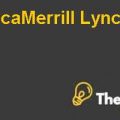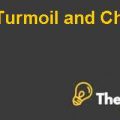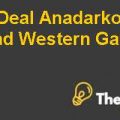
Question 3
Which price increase is needed to offset the profit impact of the increased raw material costs (assuming that volumes are constant)? Which price decrease will result from instituting price-flex (assume a best case and a worst case)?
Answer 3
The selling price would increase by offsetting the raw material cost which is given in the “Appendix A” which shows that increase in the price by 6.5% would result in the positive side and a reductioncompany from reduction in the price. Understanding all this is done with respect to the case material. The volume is a constant which is assumed at 80% in the analysis of the price. On the other hand, informing the price-flex the price decreases would be the variablecosts, which can easily be reduced for the benefit of the company. In this worst and base case, ten percent decreases and this same percent remain for all the prices effectively. These are the main changes in both the methods of the pricing strategy. Furthermore, there is a need to increase the price by 6% to maintain the company’s original profit potential over the increase of cost.
Question 4
Six price scenarios results for Q3: absorbing vs. passing on the increased raw material costs while instituting (best case and worst case) vs. not instituting price-flex. Assuming a best scenarios and a worst case for the volume change under each of these six price scenarios. What is the impact of the twelve price-volume-cost scenarios on profit ($) and profit margin (%)?
Answer 4
The six scenarios of the given question are mentioned in the “Appendix B and C” and also attached in the excel sheet which shows their comparison on the scenario basis which are best, base and worst. The best scenario contains 10% on the level of100%, the base case is dependent on only 100%and worst case is less 10%out of the 100%. In the excel sheet, the red highlighted number shows the bad price for the company the green highlighted numbers shows the good price for the company. Now the decision is in the court of the companies` boards that which price is better for their product with regard to their competitor and its surrounding environments.
Question 5
Which volume increase would be needed (or: which volume loss could be incurred, respectively) under the six price/cost scenarios if the objectives is to keep the profit ($) constant? What if the objective is to keep the profit margin (%) constant?
Answer 5
The volume in the worst case will be 90% of the total volume and 10% would go on the loss side. Under the six price/cost some prices are meeting the objectives of the company, while the others are not. The red highlighted numbers are not following the objective of the profit margin and the green highlighted numbers are in the support of the objectives of the profit margin. Furthermore, the objective of the company is to maintain its position through following the strategy of the price-flex which is essential for the company in both ends.
Question 6
As George Reynolds, would you pass on the raw material cost increase or not? Why?
Answer 6
It is not good for the organization to pass the cost of raw materials on to the customers, because this result would create a negative impact on the company and its values. Further, it would de-motivate the sales teams and create a bad image in front of the customers and the corporation will lose its competitive edge in the market and it would lead towards the losses rather than any gain from this strategy.
Question 7
As George Reynolds, would you institute price flex as suggested or not? Why? Would you make an changes to the price-flex program?
Answer 7
Price flex is a more appropriate option for the business and it should be applied within the company. This would not only bring a competitive edge to the company, but it will also ensure that the company will maintain its cash flows in the future.
The change that should be made, is the ability to provide the discount which should be held by the senior staff rather than the sales staff, whereas the sales staff should nominate who should receive the discount as it is possible that the sales staff would give the discounts to everyone just to achieve its sales targets which would bring losses to the company in the long term..............................
This is just a sample partial case solution. Please place the order on the website to order your own originally done case solution.










